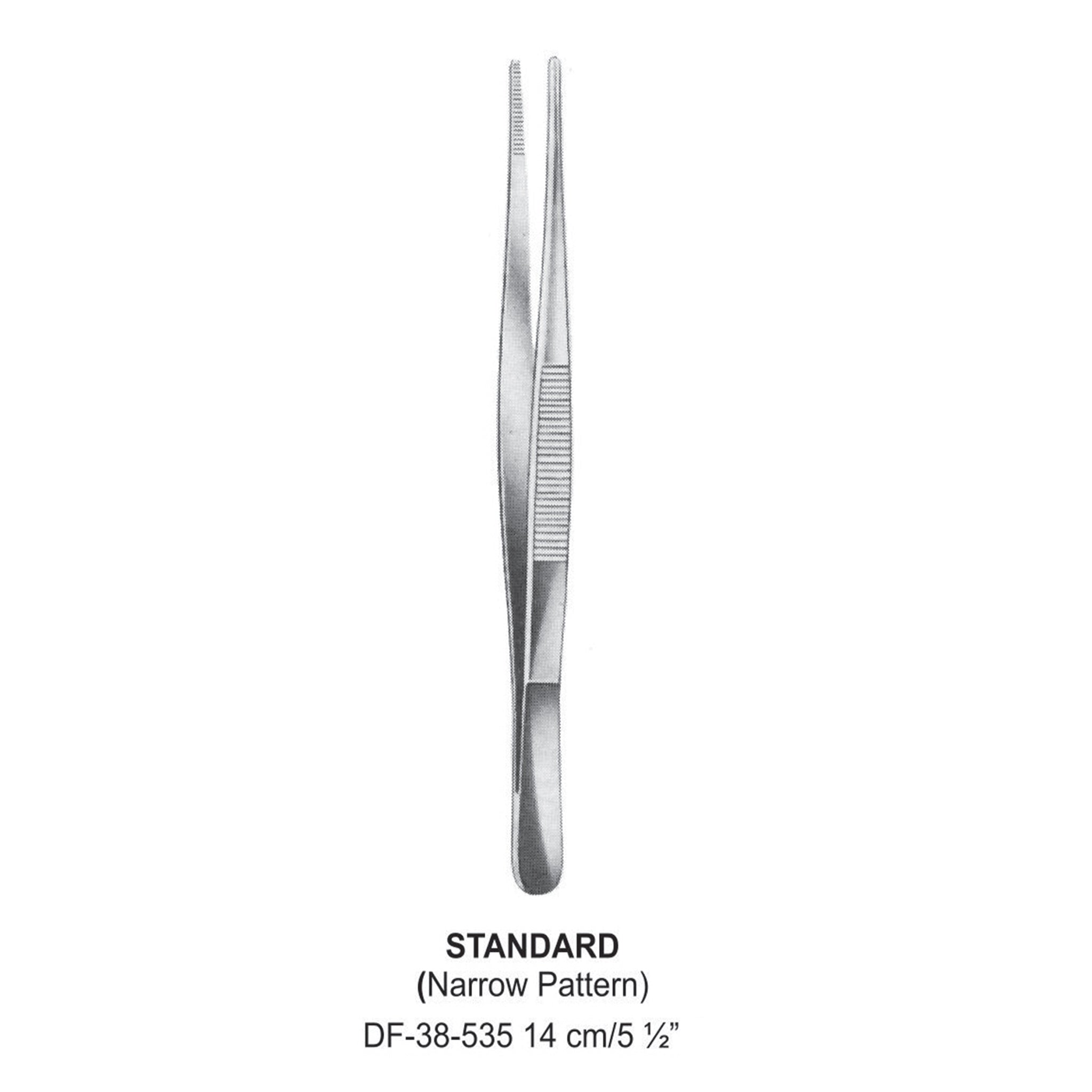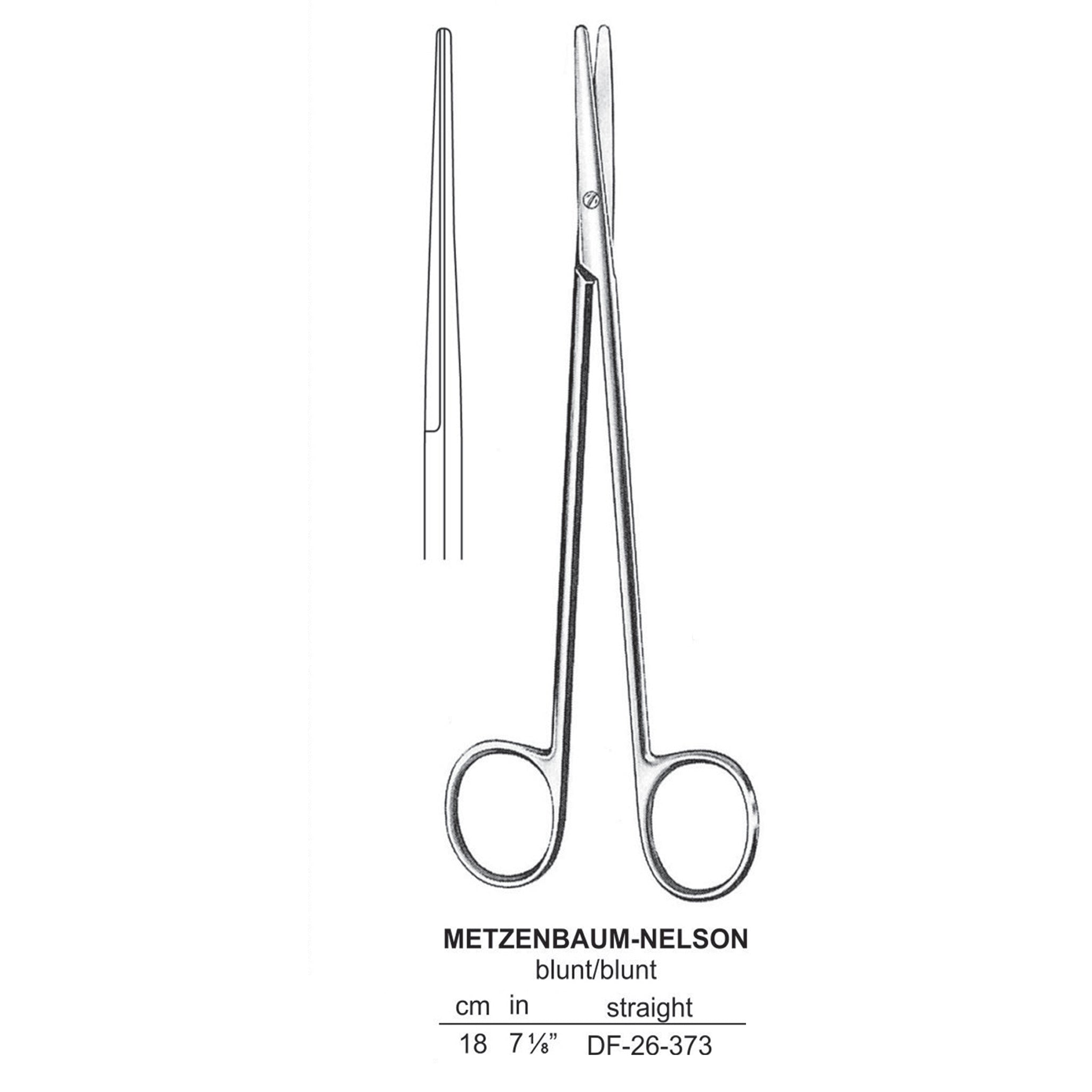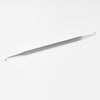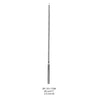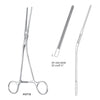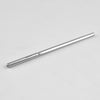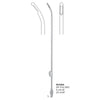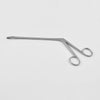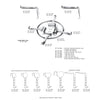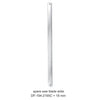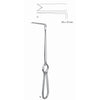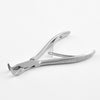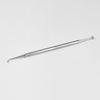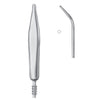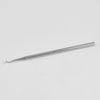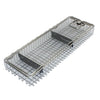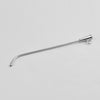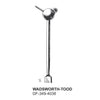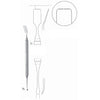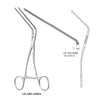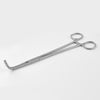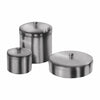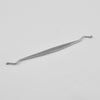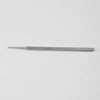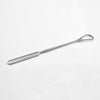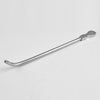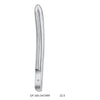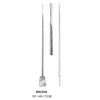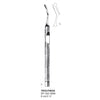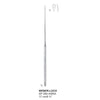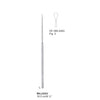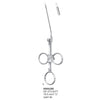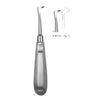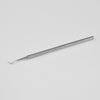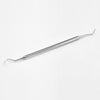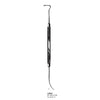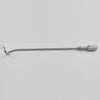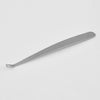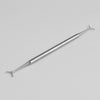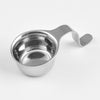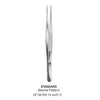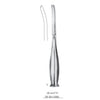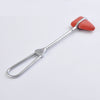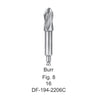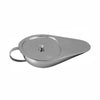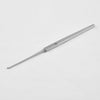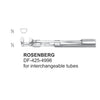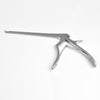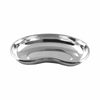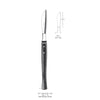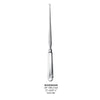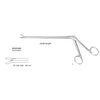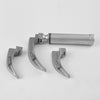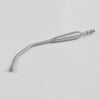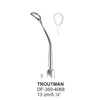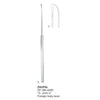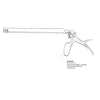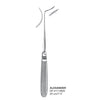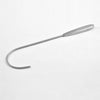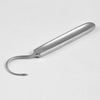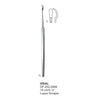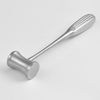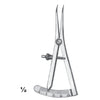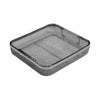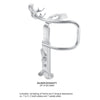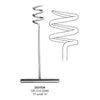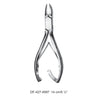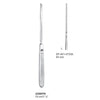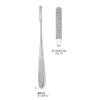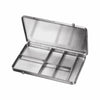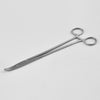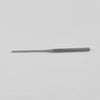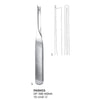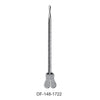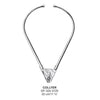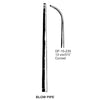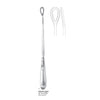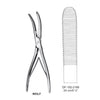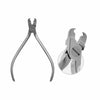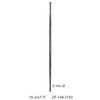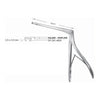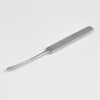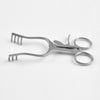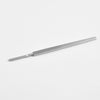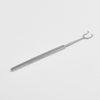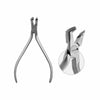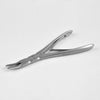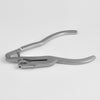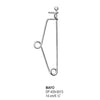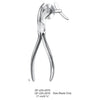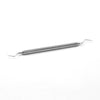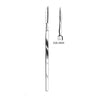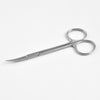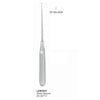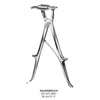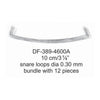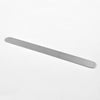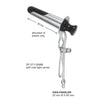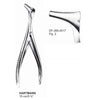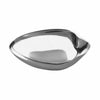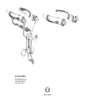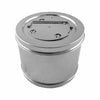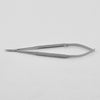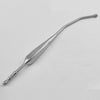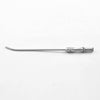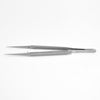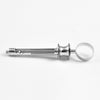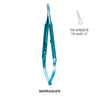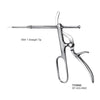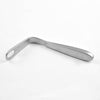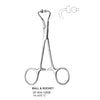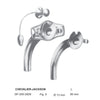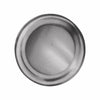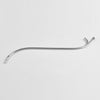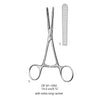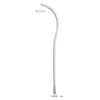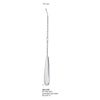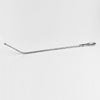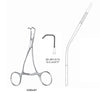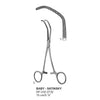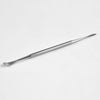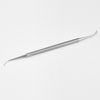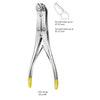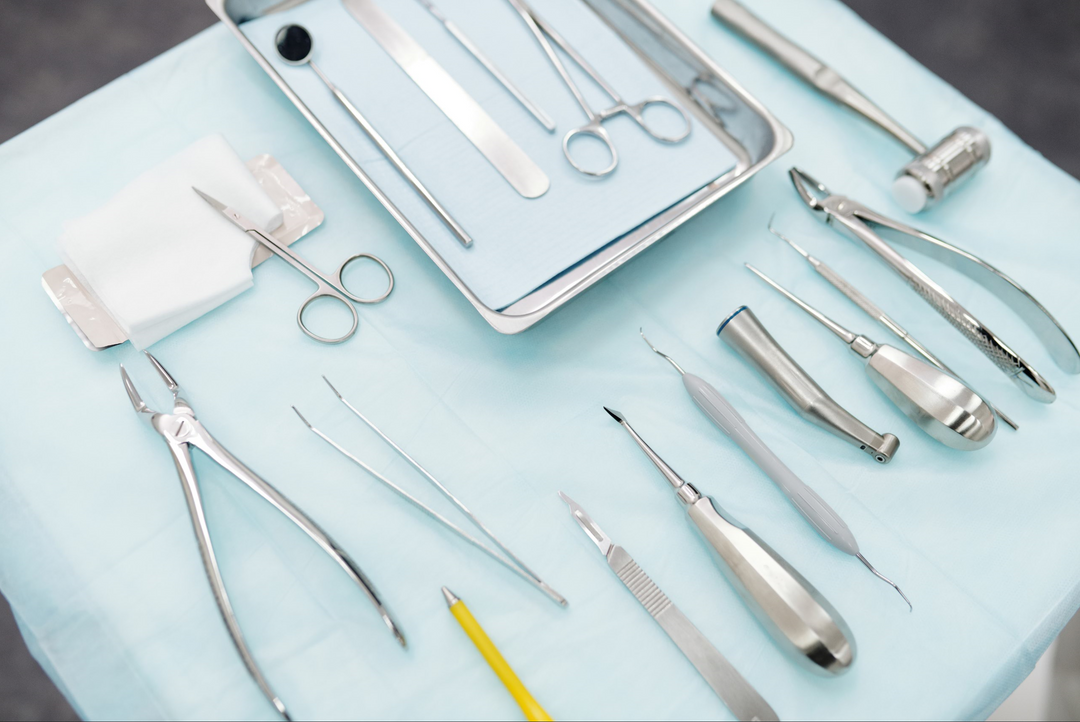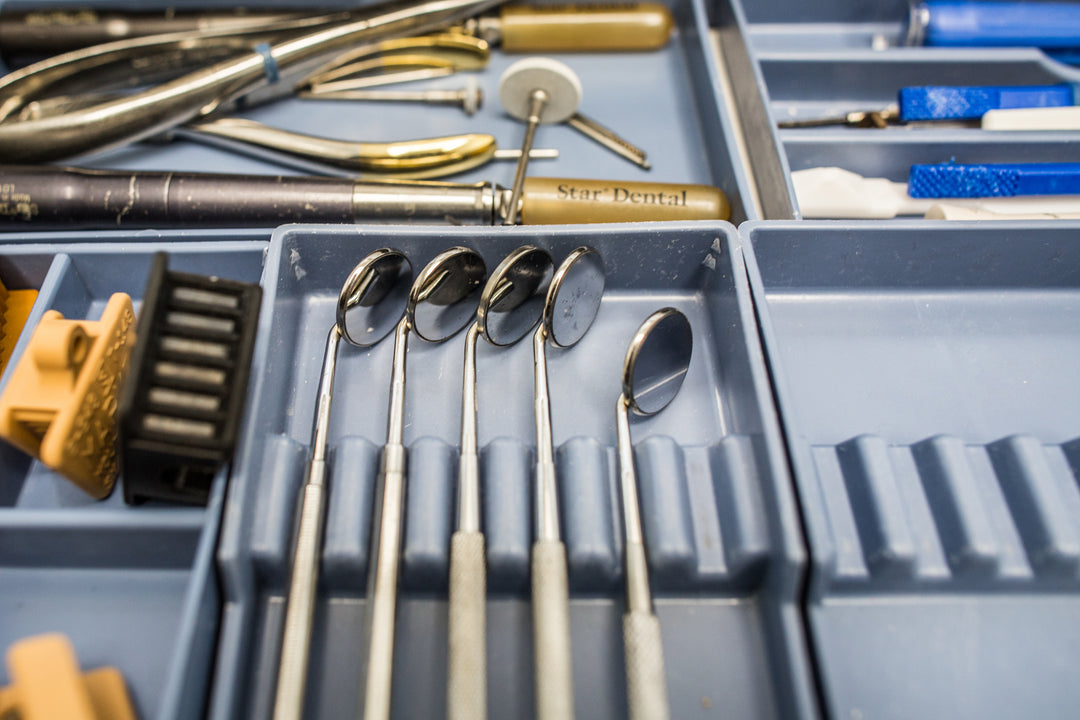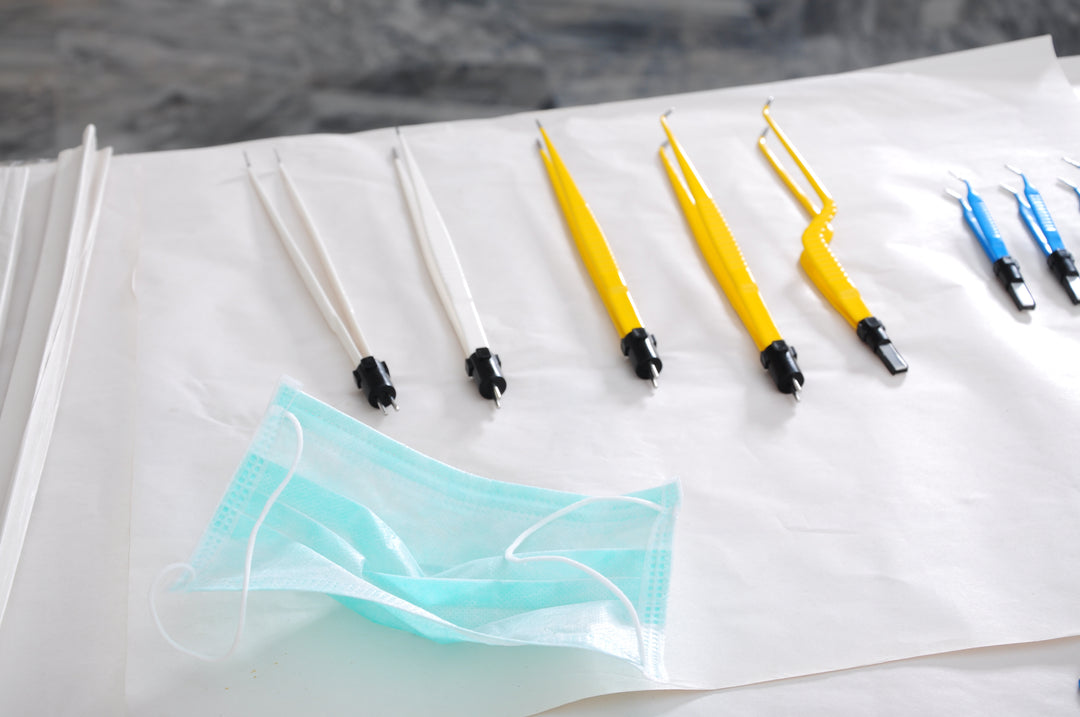The Ultimate Guide to Common Surgical Instruments
At surgicalinstrument.com, our catalog is more than just a list of the names of surgical tools. Although we can manufacture all of our surgical tools to the exacting standards of ISO, CE, ASTM, and the FDA, we keep in mind that every surgical tool is also a tribute to the surgeon that created it. Each tool honors the countless surgeons who perfected it through decades of successful use. In that spirit of reverence for the great innovators on whose work modern surgery rests, we present this guide to common surgical instruments.
Ratcheted Forceps
Allis Forceps
Allis forceps are named after their inventor, Dr. Oscar H. Allis. He was a renowned American surgeon who lived in the late 19th and early 20th centuries.
Allis forceps have a distinctive design consisting of sharp teeth or points along the instrument's jaws. These teeth are designed to grip soft tissue firmly, allowing the surgeon to manipulate and reposition it during a procedure. Allis forceps come in various sizes and lengths, with longer forceps typically used for deep tissue procedures.
Allis forceps are commonly used in gynecological, urological, and gastrointestinal surgeries. They are particularly useful for grasping tough or fibrous tissues that other forceps cannot easily manipulate. However, because the teeth can cause damage to delicate tissues, they are typically used cautiously and only when necessary.
Babcock Forceps
Babcock forceps are surgical instruments that grasp and hold delicate tissues during surgical procedures. They are named after their inventor, Dr. George H. Babcock, an American physician who lived in the late 19th and early 20th centuries.
Babcock forceps have a simple design, including two flat, rounded jaws that taper to a narrow tip. The jaws are often lined with a series of horizontal serrations that help to grip and hold the tissue without causing damage. The forceps are spring-loaded, allowing the jaws to be opened and closed with one hand. This leaves the other hand free to manipulate the tissue or perform other tasks.
Babcock forceps are commonly used in gastrointestinal, gynecological, and urological surgeries. They are particularly useful for grasping delicate tissues that require gentle handling, such as the fallopian tubes, appendix, or small intestines. They are also useful for grasping tissues difficult to reach with other forceps, such as those in deep or narrow surgical cavities. In summary, Babcock forceps are a versatile and essential tool in many surgical settings.
Dunhill Forceps
Dunhill's forceps, also known as Dunhill's atraumatic or tissue forceps, is a surgical instrument used to grasp and manipulate delicate tissues. They are named after their inventor, Dr. E.J. Dunhill, a British surgeon who lived in the early 20th century.
Dunhill's forceps have a unique design that features thin, flat jaws with a slightly curved shape. The jaws are smooth and non-serrated, gently gripping tissues without causing trauma or crushing. The jaws are typically longer than those found on other types of forceps. This makes them useful for reaching deep or difficult-to-reach tissues during surgical procedures.
Dunhill's forceps are commonly used in plastic surgery, ophthalmic surgery, and neurosurgery. They are particularly useful for grasping delicate tissues, such as skin flaps or blood vessels, where precise and gentle handling is critical. Because they are atraumatic, Dunhill's forceps are also useful for manipulating tissues weakened by disease or injury, such as in cases of cancer or trauma. Dunhill's forceps are essential for any surgeon who needs to manipulate delicate tissues with care and precision.
Lane Tissue Forceps
Lane tissue forceps, also known as Lane's forceps or Lane's tissue holding forceps, is a type of surgical instrument used to grasp and hold soft tissue during surgical procedures. They are named after their inventor, Sir William Arbuthnot Lane, a British surgeon who lived in the late 19th and early 20th centuries.
Lane tissue forceps have a unique design, featuring two long, thin jaws that taper to a narrow tip. The jaws are smooth and non-serrated. This allows them to grip tissues gently without causing any trauma or crushing. The forceps are spring-loaded, allowing the jaws to open and close with one hand, leaving the other free to manipulate the tissue or perform other tasks.
Lane tissue forceps are commonly used in plastic surgery, neurosurgery, and cardiovascular surgery. They are particularly useful for grasping delicate tissues that require gentle handling, such as nerves, blood vessels, or skin flaps. They are also useful for grasping tissues difficult to reach with other forceps, such as those in deep or narrow surgical cavities. These qualities make Lane tissue forceps a versatile and essential tool in many surgical settings.
Littlewood Forceps
Littlewood forceps, also known as Littlewood's alligator forceps, are a type of surgical instrument used to grasp and manipulate soft tissue during surgical procedures. They are named after their inventor, Dr. J.H. Littlewood, a British surgeon who lived in the early 20th century.
Littlewood forceps have a unique design with two jaws that taper to a narrow tip, serrated on the inner surface. The jaws are also curved, giving them a shape similar to an alligator's mouth. The forceps are spring-loaded. This allows the jaws to be opened and closed with one hand, leaving the other free to manipulate the tissue or perform other tasks.
Littlewood forceps are commonly used in plastic surgery, orthopedic surgery, and neurosurgery. They are particularly useful for grasping and manipulating soft tissue, such as skin flaps or tendons, where a secure grip is required. The serrated jaws of the forceps also make them useful for holding small bones or fragments of bone during orthopedic procedures.
Sawtell Forceps
Sawtell forceps, also known as Sawtell's bone-holding forceps, is a type of surgical instrument used to hold and manipulate bones during orthopedic surgical procedures. They are named after their inventor, Dr. Richard Sawtell, an American orthopedic surgeon who lived in the early 20th century.
Sawtell forceps have a unique design that features two curved and serrated jaws on the inner surface. The jaws are also angled to allow the surgeon to reach around corners and hold the bone in place while the procedure is being performed. The forceps are spring-loaded, allowing the jaws to open and close with one hand, leaving the other free to manipulate the bone or perform other tasks.
Sawtell forceps are commonly used in various orthopedic surgical procedures, including fracture repair, joint replacement, and bone grafting. They are particularly useful for holding small fragments of bone in place while screws or other fixation devices are being inserted. The serrated jaws of the forceps also make them useful for holding other types of tissue, such as tendons or ligaments, during surgical procedures.
Spencer-Wells Forceps
Spencer-Wells forceps, also known as artery forceps, are a type of surgical instrument used to clamp blood vessels or other structures during surgical procedures. They are named after their inventor, Dr. Charles Spencer Wells, a British surgeon who lived in the 19th century.
Spencer-Wells forceps have a unique design that features two jaws that are narrow and pointed at the tip. The jaws are also slightly curved, giving them a shape similar to a pair of scissors. The forceps are spring-loaded, allowing the jaws to open and close with one hand, leaving the other free to manipulate tissue or perform other tasks.
Spencer-Wells forceps are commonly used in general, vascular, and plastic surgery. They are particularly useful for clamping blood vessels or other structures that need to be occluded temporarily during the procedure. The narrow, pointed jaws of the forceps also make them useful for grasping small structures or tissues that are difficult to hold with other types of forceps. Spencer-Wells forceps are an essential tool in many surgical settings.
Non-Ratcheted Forceps
DeBakey Forceps
DeBakey forceps, also known as DeBakey vascular forceps, are used in vascular surgery and other delicate surgical procedures. They are named after their inventor, Dr. Michael DeBakey, a renowned American cardiovascular surgeon who lived in the 20th century.
DeBakey forceps have a unique design that features two narrow jaws and is tapered to a fine point. The jaws are also slightly curved and have longitudinal serrations, giving them a ribbed appearance. The forceps are spring-loaded, allowing the jaws to open and close with one hand, leaving the other free to manipulate tissue or perform other tasks.
DeBakey forceps are commonly used in cardiovascular and thoracic surgery and in other delicate surgical procedures where a secure grip on small or delicate tissue is required. The narrow, tapered jaws of the forceps make them particularly useful for handling delicate blood vessels, nerves, and other structures without causing damage. The serrations on the jaws also help to prevent tissue from slipping out of the forceps' grip during the procedure. DeBakey forceps have become essential in many surgical settings, especially those involving delicate tissue and structures.
Lane's Forceps
Lane's forceps, also known as Lane's tissue forceps, is a type of surgical instrument used to grasp and manipulate tissue during surgical procedures. They are named after their inventor, Sir William Arbuthnot Lane, a British surgeon who lived in the late 19th and early 20th centuries.
Lane's forceps have a unique design that features two slightly curved jaws with broad, flat surfaces with small teeth or serrations. The jaws are also relatively short and taper to a fine point at the tips. The forceps are spring-loaded, allowing the jaws to open and close with one hand, leaving the other free to manipulate tissue or perform other tasks.
Lane's forceps are commonly used in various surgical procedures, including plastic surgery, orthopedic surgery, and general surgery. They are particularly useful for grasping and manipulating thick or fibrous tissue, such as muscle, fascia, or tendon. The broad, flat jaws of the forceps also make them useful for holding large sections of tissue or for grasping tissue in areas where other types of forceps may not be able to reach. Lane's forceps are a versatile and essential tool in many surgical settings.
Gillies Forceps
Gillies forceps are a surgical instrument commonly used in plastic and reconstructive surgery. They are named after Sir Harold Delf Gillies, a New Zealand-born surgeon considered the father of modern plastic surgery.
Gillies forceps have a straight, slender design with a pointed tip and a curved, serrated blade. They grasp and hold delicate tissue during surgery, such as skin, muscle, or blood vessels. The serrated edge of the blade helps to prevent the tissue from slipping out of the forceps' grasp.
These forceps come in various sizes and shapes, including straight and curved versions, and with or without teeth on the blades. They are typically made of stainless steel, which makes them strong and durable enough to withstand sterilization and repeated use.
Overall, Gillies forceps are a versatile and essential tool in plastic and reconstructive surgery, allowing surgeons to manipulate tissue with precision and care.
Scissors
Mayo Scissors
Mayo scissors are a type of surgical instrument commonly used in various surgical procedures. They are named after the Mayo Clinic, a renowned medical facility in Rochester, Minnesota.
Mayo scissors have a distinctive design. They feature long, straight, blunt-tipped blades that are slightly curved at the end. The blades are typically stainless steel and have a serrated edge for cutting through tough tissue. The handles are usually ring-shaped and can be either straight or curved, depending on the specific use of the scissors.
Mayo scissors come in various sizes, ranging from small, delicate scissors for precise surgical work to larger, heavier scissors for more robust procedures. They are used in various surgical specialties, including general surgery, plastic surgery, and cardiovascular surgery.
Mayo scissors are a versatile and indispensable tool in surgical settings, allowing surgeons to easily and accurately make precise cuts and incisions.
McIndoe Scissors
McIndoe scissors are a surgical instrument commonly used in plastic and reconstructive surgery. They are named after Sir Archibald McIndoe, a pioneering plastic surgeon who worked extensively during World War II.
McIndoe scissors have a distinctive design, with long, slender blades that are straight and pointed at the tip. The blades are typically stainless steel and have a sharp, smooth edge for precise cuts. The handles are usually ring-shaped and can be either straight or curved, depending on the specific use of the scissors.
McIndoe scissors come in various sizes, ranging from small, delicate scissors for precise surgical work to larger, heavier scissors for more robust procedures. They are used in many surgical specialties, including plastic and reconstructive surgery, ophthalmology, and gynecology.
McIndoe scissors are a versatile and essential tool in surgical settings, allowing surgeons to easily and accurately make precise and delicate cuts.
Retractors
Langenbeck Retractors
Langenbeck retractors are a type of surgical instrument commonly used in various surgical procedures. They are named after Bernhard von Langenbeck, a pioneering German surgeon in the 19th century.
Langenbeck retractors have a distinctive design, with two flat, curved blades connected by a hinge mechanism. The blades are typically made of stainless steel and have a smooth, flat surface. The handles are usually ring-shaped and can be either straight or curved, depending on the specific use of the retractor.
Langenbeck retractors come in various sizes, ranging from small, delicate retractors for precise surgical work to larger, heavier retractors for more robust procedures. They are used across a wide range of surgical specialties, including general surgery, orthopedics, and neurosurgery.
The primary function of Langenbeck retractors is to hold back tissues and organs during surgical procedures, allowing the surgeon to access and work on the surgical site with greater visibility and ease. They also protect surrounding tissues and organs from accidental injury during surgery.
Norfolk and Norwich Retractor
The Norfolk and Norwich retractor is a type of surgical instrument commonly used in various surgical procedures. It is named after the Norfolk and Norwich University Hospital, a teaching hospital in Norwich, England.
The Norfolk and Norwich retractor has a distinctive design, with a curved blade attached to a ring handle. The blade is typically made of stainless steel and has a smooth, flat surface. The handle is usually ring-shaped and can be either straight or curved, depending on the specific use of the retractor.
Norfolk and Norwich retractors come in various sizes, ranging from small, delicate retractors for precise surgical work to larger, heavier retractors for more robust procedures. They are used in a wide range of surgical specialties, including general surgery, gynecology, and urology.
The primary function of the Norfolk and Norwich retractor is to hold back tissues and organs during surgical procedures, allowing the surgeon to access and work on the surgical site with greater visibility and ease. They are particularly useful in surgeries where limited access is available or where there is a need for fine control in manipulating the tissues.
Norfolk and Norwich retractors are versatile and essential tools in surgical settings, allowing surgeons to manipulate tissues and organs precisely and carefully.
Travers Retractors
Travers retractors are a type of surgical instrument commonly used in various surgical procedures. They are named after Sir Benjamin Travers, a renowned British surgeon and anatomist who lived in the 19th century.
Travers retractors have a distinctive design, with two curved, spoon-shaped blades attached to a central handle. The blades are typically made of stainless steel and have a smooth, flat surface. The handle is usually ring-shaped and can be either straight or curved, depending on the specific use of the retractor.
Travers retractors come in various sizes, ranging from small, delicate retractors for precise surgical work to larger, heavier retractors for more robust procedures. They are used in a wide range of surgical specialties, including general surgery, orthopedics, and neurosurgery.
The primary function of Travers retractors is to hold back tissues and organs during surgical procedures, allowing the surgeon to access and work on the surgical site with greater visibility and ease. They are particularly useful in surgeries where limited access is available or where there is a need for fine control in manipulating the tissues.
Needle Holder
A needle holder is a surgical instrument used to hold and manipulate surgical needles during a surgical procedure. It is also known as a needle driver or surgical needle holder.
Needle holders have a distinctive design, with a scissor-like handle and a long, slender jaw that is serrated or grooved to provide a secure grip on the needle. The jaws are usually made of stainless steel and can be either straight or curved, depending on the specific use of the needle holder.
During a surgical procedure, the needle holder is used to grasp and manipulate the needle, allowing the surgeon to precisely control the placement and tension of the suture. This is particularly important in delicate surgeries where fine suturing is required, such as in plastic and reconstructive surgery, ophthalmology, and neurosurgery.
There are many different types of needle holders available, each with its own unique features and advantages. Some needle holders have a ratcheted mechanism allowing the surgeon to lock the jaws. In contrast, others have a rotating mechanism that allows the jaws to rotate freely, providing greater flexibility and control.
Needle holders are essential in surgical settings, allowing surgeons to perform precise and delicate suturing with ease and accuracy.
Sponge Holding Rampley
A Sponge Holding Rampley is a surgical instrument used to hold and manipulate surgical sponges during a surgical procedure. It is also known as a Rampley sponge forceps or sponge-holding forceps.
The Sponge Holding Rampley has a distinctive design, with long, thin, serrated, or grooved jaws to provide a secure grip on the surgical sponge. The jaws are usually made of stainless steel and have a locking mechanism that allows the forceps to remain clamped on the sponge.
During a surgical procedure, the Sponge Holding Rampley is used to hold and manipulate surgical sponges, which are used to absorb blood and other fluids from the surgical site. The forceps are particularly useful in surgeries requiring frequent sponge changes or where the surgical site is deep and difficult to access.
The Sponge Holding Rampley is also useful in surgeries where there is a need to maintain a sterile environment, as the forceps allow the surgeon to handle the surgical sponges without contaminating them. The forceps can be sterilized and reused for multiple surgeries, making them a cost-effective and efficient tool in surgical settings.
Towel Clip
In a surgical context, a towel clip is a medical instrument used to secure surgical drapes or towels in place during a surgical procedure. It is typically made of stainless steel and consists of two hinged arms that are spring-loaded and have serrated or pointed tips to grip the fabric securely. The towel clip is placed over the edge of the drape or towel and clamped shut, holding the fabric in place and preventing it from falling or shifting during the procedure. Towel clips are used to create a sterile field and maintain a clear surgical site, helping to reduce the risk of infection and improve surgical outcomes.
We Have a Complete Inventory of Modern Surgical Tools
We carry a complete inventory of surgical instruments—and when we don't have an instrument in stock, we can manufacture it! Call us at +1 514 869 7747 or email us about your surgical instrument needs.


